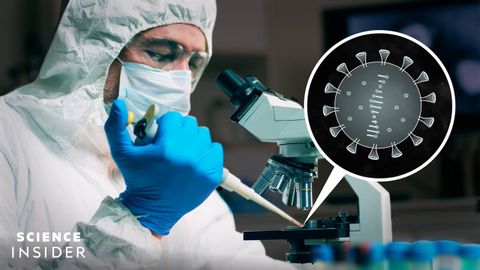コロナウイルスが研究室で作られたものではないことがわかる理由 (How We Know The Coronavirus Wasn’t Made In A Lab)
林宜悉 が 2021 年 03 月 25 日 に投稿  この条件に一致する単語はありません
この条件に一致する単語はありませんUS /sɪɡˈnɪfɪkənt/
・
UK /sɪgˈnɪfɪkənt/
US /ˈprɑsˌɛs, ˈproˌsɛs/
・
UK /prə'ses/
- v.t.(コンピュータの)データを処理する;処理する;処理する;一連の工程を経る;加工する : 加工処理する;理解する
- n. (c./u.)手続き;一連の行為;方法;訴訟手続き;プロセス (コンピューター)
US /əˈsoʊʃiˌeɪt/
・
UK /ə'səʊʃɪeɪt/
- n. (c.)同僚 : 仕事仲間
- v.t./i.交際する;連想する
- adj.準会員
US /fɔrs, fors/
・
UK /fɔ:s/
- n.軍隊;力;強制;武力;影響力;勢い;警察
- v.t.強要する;こじ開ける;促成栽培する
エネルギーを使用
すべての単語を解除
発音・解説・フィルター機能を解除
